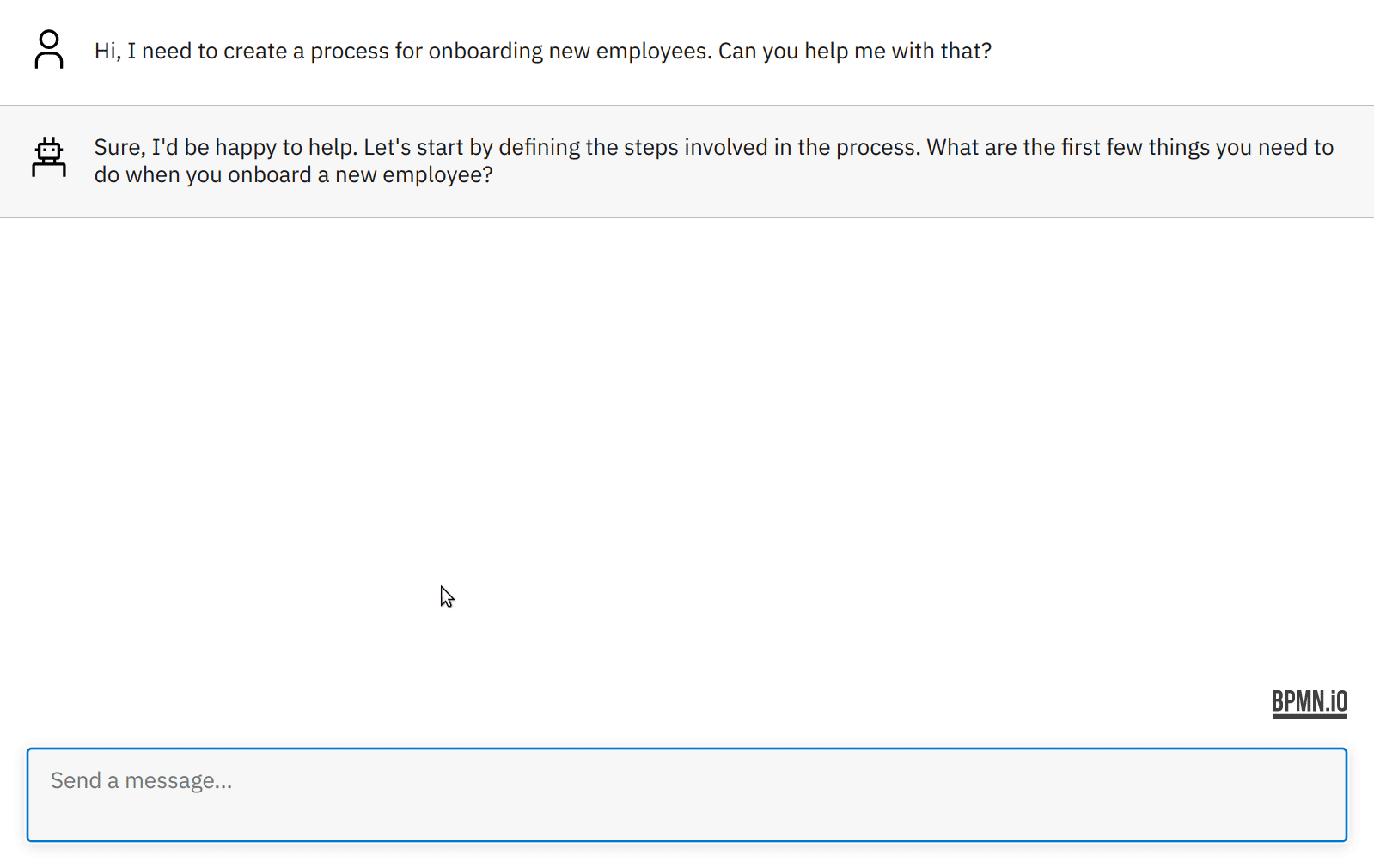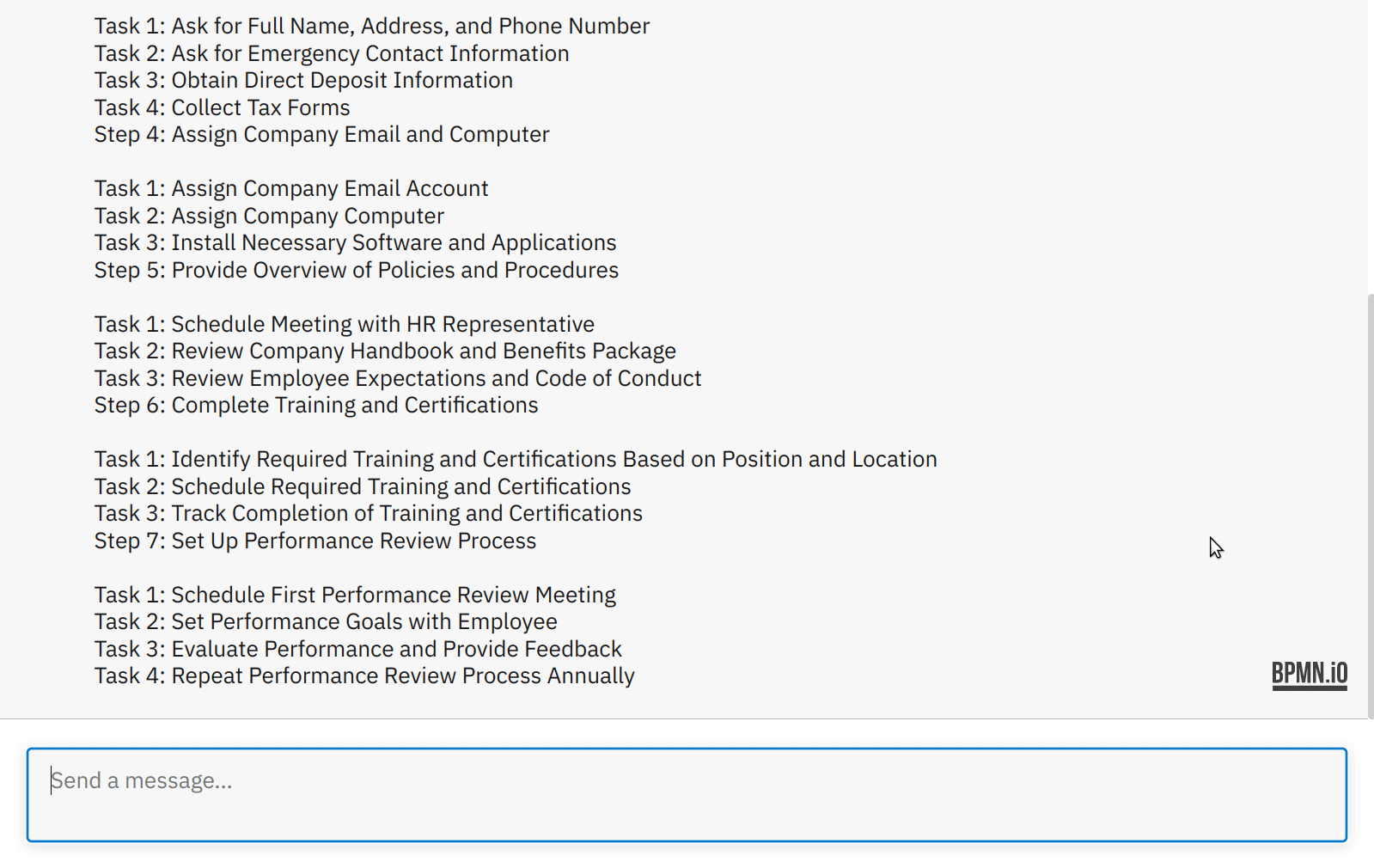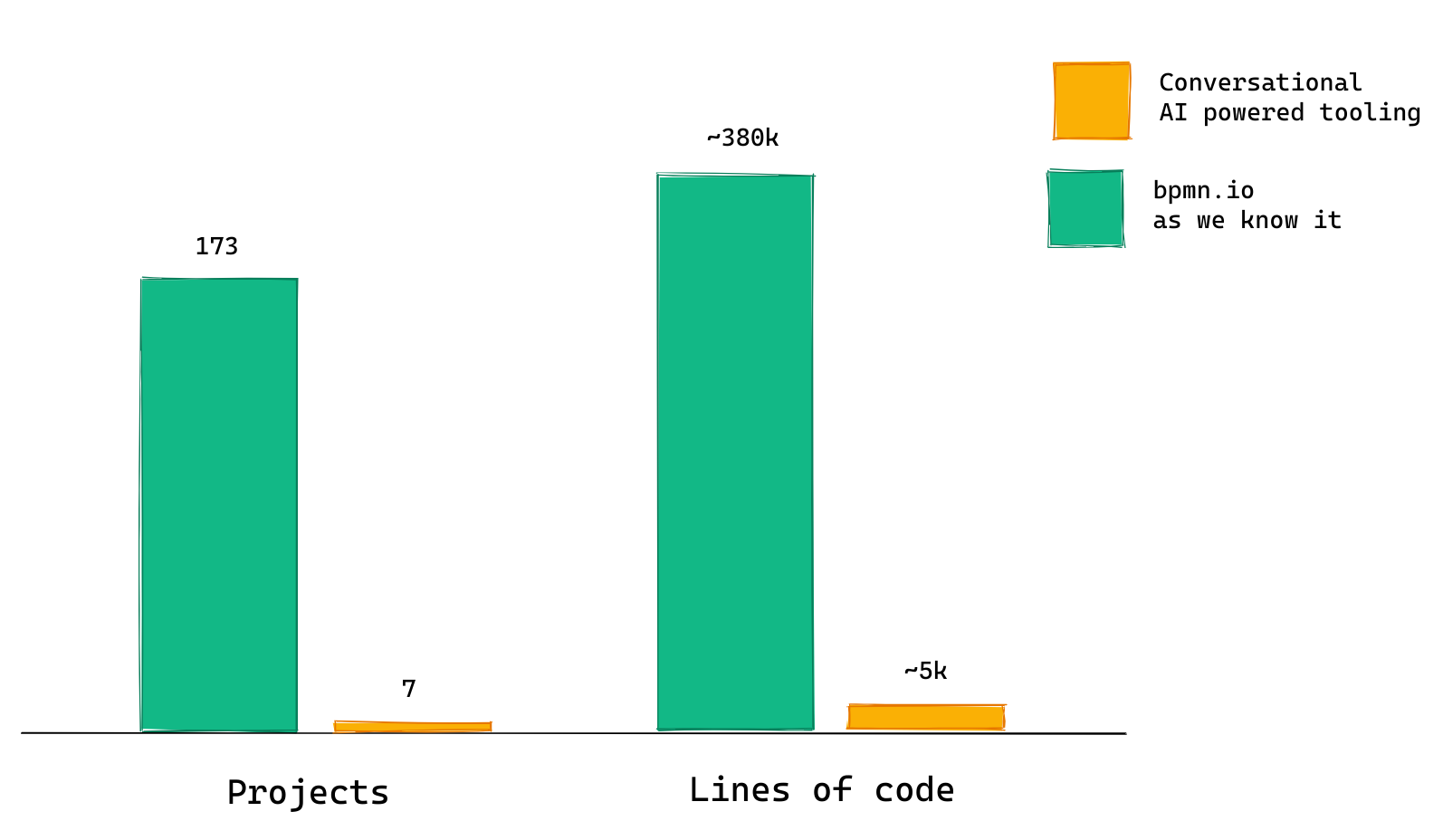April Fools' Notice
This post is a joke and features announced are not part of our mid-term planing and/or official releases. You still think we mentioned something useful? Do not hesitate to give us feedback @bpmn_io or via our project forums.
We always strive to innovate and find new ways to make process management more accessible and user-friendly. That is why we are excited to share one of the most significant updates in the bpmn.io eco-system to date: We are replacing our graphical toolkits with modern chat-based solutions. By being completely conversational, the new tools will revolutionize diagram modeling and embedding as we know it.
Imagine a future where you don't have to know BPMN or some BPMN tool to be successful at process orchestration. Imagine a future where you don't need to know exclusive gateways, interrupting boundary events or conditional flows to define the crucial, not-so-happy path. Imagine a future where you create your critical processes as casually as texting or voicing your friends via WhatsApp. That future is here, and it is conversational, AI-powered chat brought to you by bpmn.io.

Designing your processes is going to be simple, and conversational.
In the next version of bpmn-js you'll be prompted to create a new process by starting a conversation with our virtual assistant. You'll explain the steps involved in the process, and the assistant will guide you through process creation and optimization, suggesting improvements and adjustments based on your goals, context, and preferences.
All that works without knowing BPMN as a language, significantly lowering the entry barrier. The chat-based solution is user-friendly and accessible to everyone, regardless of their expertise or technical knowledge. It also provides a more collaborative and dynamic approach to process management, enabling people from vastly different backgrounds to work together in real time and iterate on the process as needed.
Like BPMN 2.0, just different
To date, a BPMN 2.0 file is the source of truth for your BPMN process. It is an XML file used as a standardized interchange for your processes. Tools like bpmn-js make it accessible to humans.
Looking into our chat-based, conversational future, the source of your process will be its complete conversational history: A read-only log, readable by any text editor, trivial to search, diff, and easy to version. Did you ever want to export detailed invoice process documentation? Print the complete file as a PDF and make it available to your co-workers. Do you want a four-page full-text executive summary of your order processing flow? Ask our conversational AI for it, and it will do its best to summarize what emerged over time.

Access your process in a human-friendly manner.
The AI tries to summarize collected knowledge in a simple, accessible manner; for most processes, that means a happy path plus a (longer) list of exceptions. The few of us interested in the nitty-gritty can ask follow-up questions.
With most real-world, grown-over-time processes, you're likely more interested in getting concrete, in-depth insights into specific parts of your design. Send your questions to our assistant, and it will do its best to answer you or help refine your query—another place where our new solution excels.

Good to know.
Under the hood
Our eco-system of graphical tools is enormous, counting over 150 projects and over 300.000 lines of code. Our conversational AI learns how to apply methods and tools we'd otherwise need to build. Hence it drastically reduces our eco-system complexity. The following graph shows rough estimations:

Estimated impacts on our eco-system complexity.
Is it still embeddable?
Today it is not feasible to execute large language models (LLM) such as GPT on regular computers or mobile devices, let alone client-side inside the browser. Conversational AIs rely on these language models. So the burning question is: Will future bpmn.io still be embeddable? The answer is yes.
We worked hard to provide optimized, pre-trained versions of our LLM plus conversational modeling helper. It is suitable for use in many different environments, including browsers. Building on top of Alpaca, Rust, and WASM, you only have to lazy load 90MB of binary blobs to get our new toolkits running on your web page. For comparison, that is barely more than what you'll load as you browse your favorite news site.
Wrapping up
This post announced the deprecation of our graphical toolkits in favor of a new chat-based solution. We hope you are as excited as we are about the future of modeling at bpmn.io!
Of course, this is just the beginning of our conversation. In the future, we will explore paths to turn our chatbot into a process/decision engine (call it BPM center of excellence). If you can talk to our chatbot, so can your programs, and the bot can send instructions back.
Furthermore, we'll explore the ability to summarize/snapshot your processes in non-human languages, such as BPEL for processes and CSV/checklists for decisions.
We hope you join us as we evolve the future of modeling tooling. Reach out to us via our forums or toot us on Mastodon. Let's have a chat!
ChatGPT co-authored and approved this announcement.
Are you passionate about JavaScript, modeling, and the web?
Join Camunda and build modeling tools people 